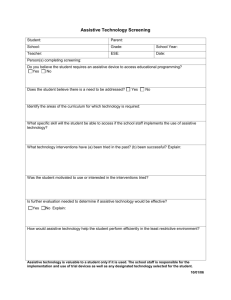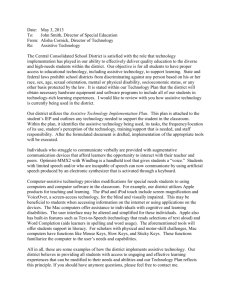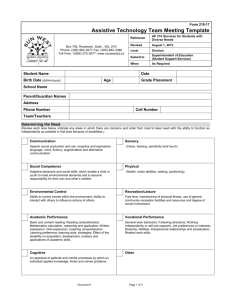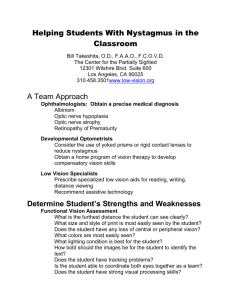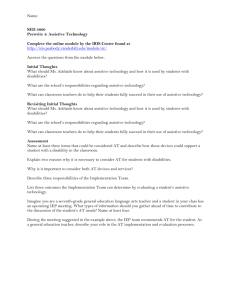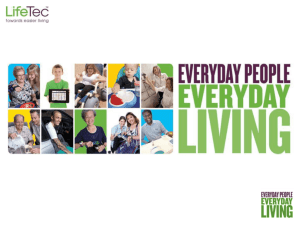Inclusive Learning through Technology: Individualized Curriculum in
advertisement
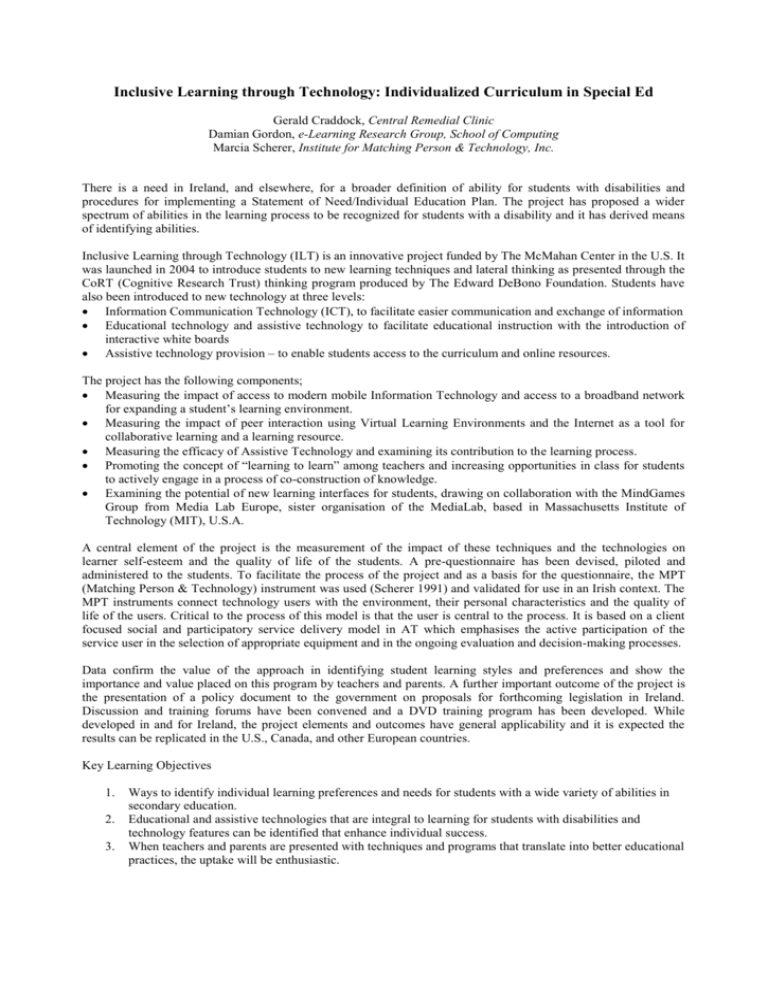
Inclusive Learning through Technology: Individualized Curriculum in Special Ed Gerald Craddock, Central Remedial Clinic Damian Gordon, e-Learning Research Group, School of Computing Marcia Scherer, Institute for Matching Person & Technology, Inc. There is a need in Ireland, and elsewhere, for a broader definition of ability for students with disabilities and procedures for implementing a Statement of Need/Individual Education Plan. The project has proposed a wider spectrum of abilities in the learning process to be recognized for students with a disability and it has derived means of identifying abilities. Inclusive Learning through Technology (ILT) is an innovative project funded by The McMahan Center in the U.S. It was launched in 2004 to introduce students to new learning techniques and lateral thinking as presented through the CoRT (Cognitive Research Trust) thinking program produced by The Edward DeBono Foundation. Students have also been introduced to new technology at three levels: Information Communication Technology (ICT), to facilitate easier communication and exchange of information Educational technology and assistive technology to facilitate educational instruction with the introduction of interactive white boards Assistive technology provision – to enable students access to the curriculum and online resources. The project has the following components; Measuring the impact of access to modern mobile Information Technology and access to a broadband network for expanding a student’s learning environment. Measuring the impact of peer interaction using Virtual Learning Environments and the Internet as a tool for collaborative learning and a learning resource. Measuring the efficacy of Assistive Technology and examining its contribution to the learning process. Promoting the concept of “learning to learn” among teachers and increasing opportunities in class for students to actively engage in a process of co-construction of knowledge. Examining the potential of new learning interfaces for students, drawing on collaboration with the MindGames Group from Media Lab Europe, sister organisation of the MediaLab, based in Massachusetts Institute of Technology (MIT), U.S.A. A central element of the project is the measurement of the impact of these techniques and the technologies on learner self-esteem and the quality of life of the students. A pre-questionnaire has been devised, piloted and administered to the students. To facilitate the process of the project and as a basis for the questionnaire, the MPT (Matching Person & Technology) instrument was used (Scherer 1991) and validated for use in an Irish context. The MPT instruments connect technology users with the environment, their personal characteristics and the quality of life of the users. Critical to the process of this model is that the user is central to the process. It is based on a client focused social and participatory service delivery model in AT which emphasises the active participation of the service user in the selection of appropriate equipment and in the ongoing evaluation and decision-making processes. Data confirm the value of the approach in identifying student learning styles and preferences and show the importance and value placed on this program by teachers and parents. A further important outcome of the project is the presentation of a policy document to the government on proposals for forthcoming legislation in Ireland. Discussion and training forums have been convened and a DVD training program has been developed. While developed in and for Ireland, the project elements and outcomes have general applicability and it is expected the results can be replicated in the U.S., Canada, and other European countries. Key Learning Objectives 1. 2. 3. Ways to identify individual learning preferences and needs for students with a wide variety of abilities in secondary education. Educational and assistive technologies that are integral to learning for students with disabilities and technology features can be identified that enhance individual success. When teachers and parents are presented with techniques and programs that translate into better educational practices, the uptake will be enthusiastic.
